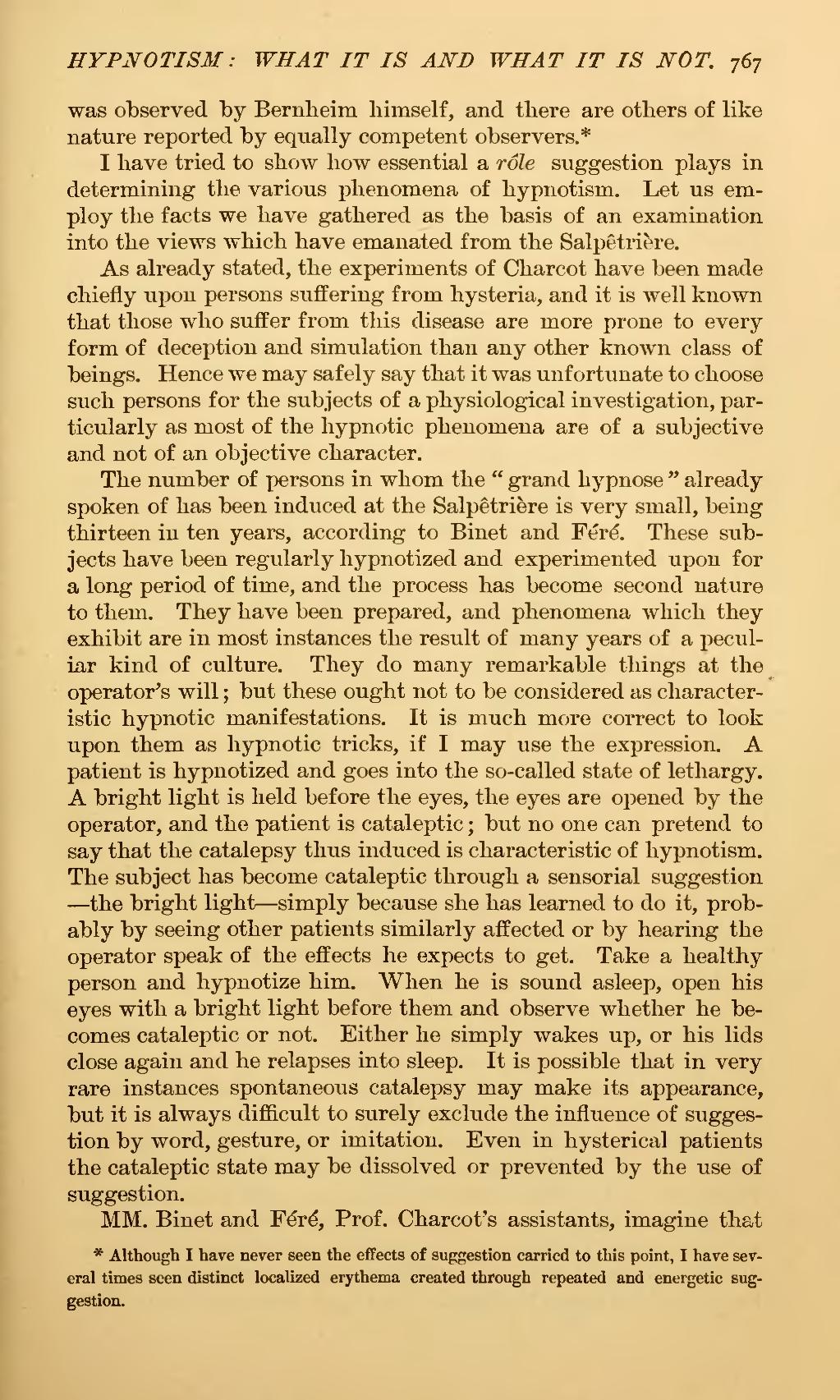was observed by Bernheim himself, and there are others of like nature reported by equally competent observers.[1]
I have tried to show bow essential a rôle suggestion plays in determining the various phenomena of hypnotism. Let us employ the facts we have gathered as the basis of an examination into the views which have emanated from the Salpêtrière.
As already stated, the experiments of Charcot have been made chiefly upon persons suffering from hysteria, and it is well known that those who suffer from this disease are more prone to every form of deception and simulation than any other known class of beings. Hence we may safely say that it was unfortunate to choose such persons for the subjects of a physiological investigation, particularly as most of the hypnotic phenomena are of a subjective and not of an objective character.
The number of persons in whom the "grand hypnose" already spoken of has been induced at the Salpêtrière is very small, being thirteen in ten years, according to Binet and Féré. These subjects have been regularly hypnotized and experimented upon for a long period of time, and the process has become second nature to them. They have been prepared, and phenomena which they exhibit are in most instances the result of many years of a peculiar kind of culture. They do many remarkable things at the operator's will; but these ought not to be considered as characteristic hypnotic manifestations. It is much more correct to look upon them as hypnotic tricks, if I may use the expression. A patient is hypnotized and goes into the so-called state of lethargy. A bright light is held before the eyes, the eyes are opened by the operator, and the patient is cataleptic; but no one can pretend to say that the catalepsy thus induced is characteristic of hypnotism. The subject has become cataleptic through a sensorial suggestion—the bright light—simply because she has learned to do it, probably by seeing other patients similarly affected or by hearing the operator speak of the effects he expects to get. Take a healthy person and hypnotize him. When he is sound asleep, open his eyes with a bright light before them and observe whether he becomes cataleptic or not. Either he simply wakes up, or his lids close again and he relapses into sleep. It is possible that in very rare instances spontaneous catalepsy may make its appearance, but it is always difficult to surely exclude the influence of suggestion by word, gesture, or imitation. Even in hysterical patients the cataleptic state may be dissolved or prevented by the use of suggestion.
MM. Binet and Féré, Prof. Charcot's assistants, imagine that
- ↑ Although I have never seen the effects of suggestion carried to this point, I have several times seen distinct localized erythema created through repeated and energetic suggestion.
